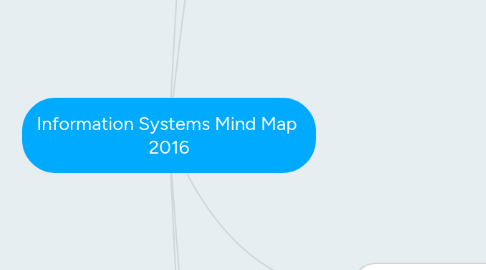
1. Communication and networks
1.1. Connectivity
1.2. The wireless revolution
1.3. Communication systems
1.4. Communication channels
1.4.1. Physical connections
1.4.1.1. Twisted-pair cable
1.4.1.2. Coaxial cable
1.4.1.3. Fiber-optic cable
1.4.2. Wireless connections
1.4.2.1. Bluetooth
1.4.2.2. Wi-Fi (Wireless Fidelity)
1.4.2.3. Microwave
1.4.2.4. WiMax (Worldwide interoperability for Microwave Access
1.4.2.5. LTE (Long Term Evolution)
1.4.2.6. Satelite
1.4.3. Connection devices
1.4.3.1. Modems
1.4.3.1.1. Telephone modem
1.4.3.1.2. DSL (Digital Subscriber Line)
1.4.3.1.3. Cable modem
1.4.3.1.4. Wireless modem
1.4.3.2. Connection Service
1.4.3.2.1. Digital subscriber line
1.4.3.2.2. Cable service
1.4.3.2.3. Fiber-optic service
1.4.3.2.4. Satellite connection services
1.4.3.2.5. Cellular service providers
1.5. Data Transmission
1.5.1. Bandwidth
1.5.1.1. Voice band
1.5.1.2. Medium band
1.5.1.3. Broadband
1.5.1.4. Baseband
2. Security, Ethics and Privacy
2.1. Privacy
2.1.1. Accuracy
2.1.2. Property
2.1.3. Access
2.2. Large databases
2.2.1. Information brokers / resellers
2.3. Private networks
2.4. Internet and the web
2.4.1. Illusion of anonymity
2.4.2. History files
2.4.3. Temporary Internet files / browser cache
2.4.4. History files
2.4.5. Spyware
2.4.5.1. Computer monitoring software
2.4.5.1.1. Keystroke logger
2.5. Security
2.5.1. Cybercrime
2.5.2. Malicious programmes
2.5.2.1. Viruses
2.5.2.2. Worms
2.5.2.3. Trojan horses
2.5.3. Denial of service
2.5.4. Rogue Wi-Fi Hotspots
2.5.5. Data manipulation
2.5.5.1. Identity theft
2.5.5.2. Internet scams
2.5.5.2.1. Phishing
2.5.6. Cyberbullying
3. System analysis and design
3.1. Preliminary investigation
3.1.1. Defining the problem
3.1.2. Suggesting alternative systems
3.1.3. Preparing a short report
3.2. System Analysis
3.2.1. Gathering data
3.2.2. Analyzing the data
3.2.3. Documenting system analysis
3.3. System Design
3.3.1. Designing alternative systems
3.3.2. Selecting the best system
3.3.3. Writing the system design report
3.4. System Development
3.4.1. Acquiring software
3.4.2. Acquiring hardware
3.4.3. Testing the new system
3.5. System Implementation
3.5.1. Types of conversion
3.5.1.1. Direct qpproach
3.5.1.2. Parallel approach
3.5.1.3. Pilot approach
3.5.1.4. Phased approach
3.5.2. Training
3.6. System Maintenance
3.7. Prototyping and Rapid Applications Development
3.7.1. Prototyping
3.7.2. Rapid Application Development
4. Information Systems in organizations
4.1. Transaction Processing Systems
4.2. Management Information Systems
4.3. Decision Support Systems
4.4. Executive Support Systems
4.5. Office Automation Systems
4.6. Knowledge Work Systems
5. Databases
5.1. Data
5.2. Data organization
5.3. Need for databases
5.4. Database management system
5.4.1. DBMS engine
5.4.2. Data definition
5.4.3. Data manipulation
5.4.4. Application generation
5.4.5. Data administration
5.5. DBMS structure
5.5.1. Hierarchical
5.5.2. Network
5.5.3. Relational
5.5.4. Multidimensional
5.5.5. Object-oriented
5.5.5.1. Classes
5.5.5.2. Objects
5.5.5.3. Attributes
5.5.5.4. Methods
5.6. Types of databases
5.6.1. Individual
5.6.2. Company
5.6.3. Distributed
5.6.4. Commercial
5.7. Database uses and issues
5.7.1. Strategic uses
5.7.2. Security

